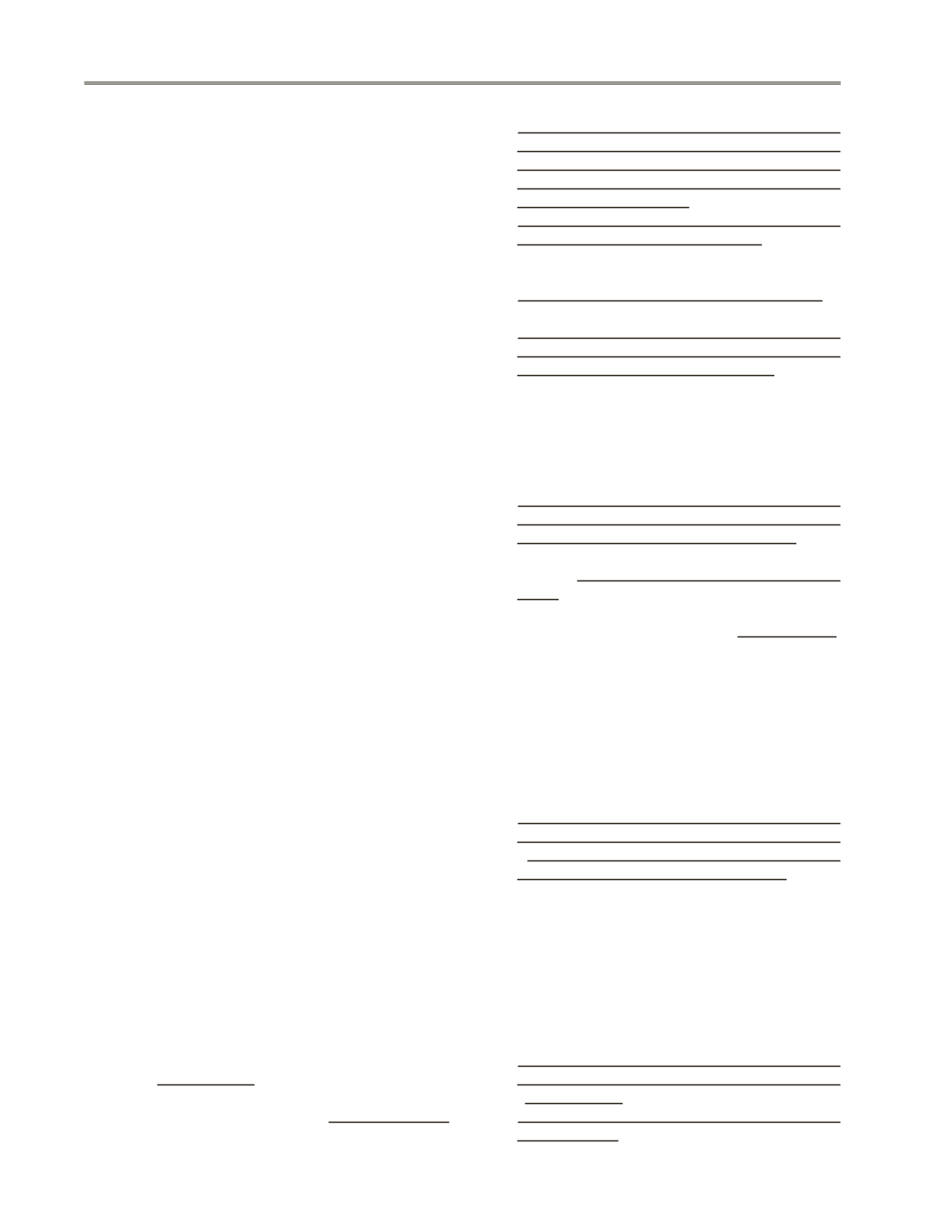
Volume 108 Number 2
66 AJHM Summer 2015
Timothy Fior, MD, André Saine, ND
tion”.
Remedy for asthma and bronchitis
An antimicrobial
A contraceptive/abortifacient
:
Asafoetida
is related to
(and considered an inferior substitute for) the ancient
Ferula
species Silphium.
Antiepileptic
Antidote for opium
1
Research
Two small (n=129), double-blind, randomized placebo
controlled trials show that
Asafoetida
performed better
than placebo for constipation-predominant irritable bowel
syndrome at a two week follow up
.
One study was just
below the 5% significance level, and the other was near the
1% significance level
.
2
History of Homeopathic Use
Asafoetida
was introduced into homeopathy and first
proven by Franz, in 1822
.
This proving included 326
symptoms from Hahnemann, Franz, Stapf, Gross and Gut-
mann
.
Their contributions, however, are not distinguished,
and no information is given as to how the drug was taken
.
This proving can be found in Hughes and Stapf’s
Archives
.
In 1829, a second proving was conducted by
Jörg and his class (Jöerg Materialien) using the
crude drug.
In 1868, Lembke conducted a third proving with the
crude substance
.
Lembke’s reproving largely confirmed
the symptoms from Franz’s proving, especially with regard
to the extremity, head and trunk pains
.
This proving did
not however, develop the symptoms of flatulence and
reverse peristalsis which feature so prominently in the
materia medica.
The last proving of E W
Berridge, was an accidental
proving with ether and
Asafoetida.
3
So far, all provings have involved the use of crude doses
.
Thus, a modern proving with potencies, including medium
and high, would be beneficial.
Asafoetida
is one of the completed monographs of
Gypser’s group
.
Their references were checked and
incorporated whenever possible.
Before making any additions,
Asafoetida
appeared in
2795 rubrics in the MMPP version of the Complete 4.5
repertory
.
After making all the additions from this lecture,
Asafoetida
now appears in 4893 rubrics
.
Thus, it was
added to 2098 rubrics (many new, some existing), nearly
doubling its representation in the repertory
.
Additionally,
its grade was increased to 2 or 3 in many rubrics.
Genius
1) The first grand characteristic of this remedy is a general
theme of
within outward
.
1a) This is best exemplified in the
reverse peristalsis
which is from within (stomach) outward (up the
esophagus). For example, we find:
·
In the evening, a hysterical rising in the throat, as
if a ball or large body ascended from the stomach
to the esophagus, or even pharynx, obliging him
repeatedly to attempt to swallow it, which relieved,
but the sensation returned.
·
Sensation of a ball rising in throat, causes diffi-
culty in breathing. Globus hystericus.
·
Sensation of pressure, as if a body or lump was
ascending in throat, has to swallow frequently.
·
Spasms of the esophagus, like that of hysteria.
·
Hysteric rising in the esophagus.
·
Sensations as if the peristaltic motion were re-
versed and, in the esophagus, were being driven
from the stomach up towards the throat.
·
A bursting feeling upwards, as though everything in
the abdomen was coming out at the mouth.
·Food, when partially swallowed, returns into the
mouth.
·Painful choking and belching up of rancid, acrid
fluid, mixed with food.
·
Distension of the stomach and bowels, with a feel-
ing as if the peristaltic motions were reversed, with
much spasmodic working in the esophagus.
·
Pressing, cutting, stitching pains in spells, not
regular, full of wind, pressing upward (never
down), gulping up rancid fluid, constipation.
1b) Also, many of the pains are from
within outward
,
for example:
·Flying
stitch from within outward
, in forehead,
temples and sides of head.
·Pains in head seem to bore as if they extended
from
the bone to the surface.
·Pressive pain in the right side of the forehead from
within outward
.
·
Pressure in the left temple, from within outward.
·
Burning in the left eyeball, as from within outward
.
·
Extensive superficial ulceration of cornea,
with burning, sticking or pressing pains, from
within outward, rest and pressure relieve, also
better in open air, numbness around eye.
·Stitching pains in the ears
from within out
.
·
Boring sticking pain in left groin from within out,
better from inspiration.
·
Stitches extending from within outward, in both
sides of the abdomen
, while sitting, after eating;
disappears on pressure.
·Sudden, jerk like, violent stitch from the right
side, from
within outward,
toward the parietes
(abdominal wall).
·
Pressure in the left intercostal muscles,
from within outward, which is worse during
and expiration.
·
Pressive pain in the right side of the chest, from
within outward.


